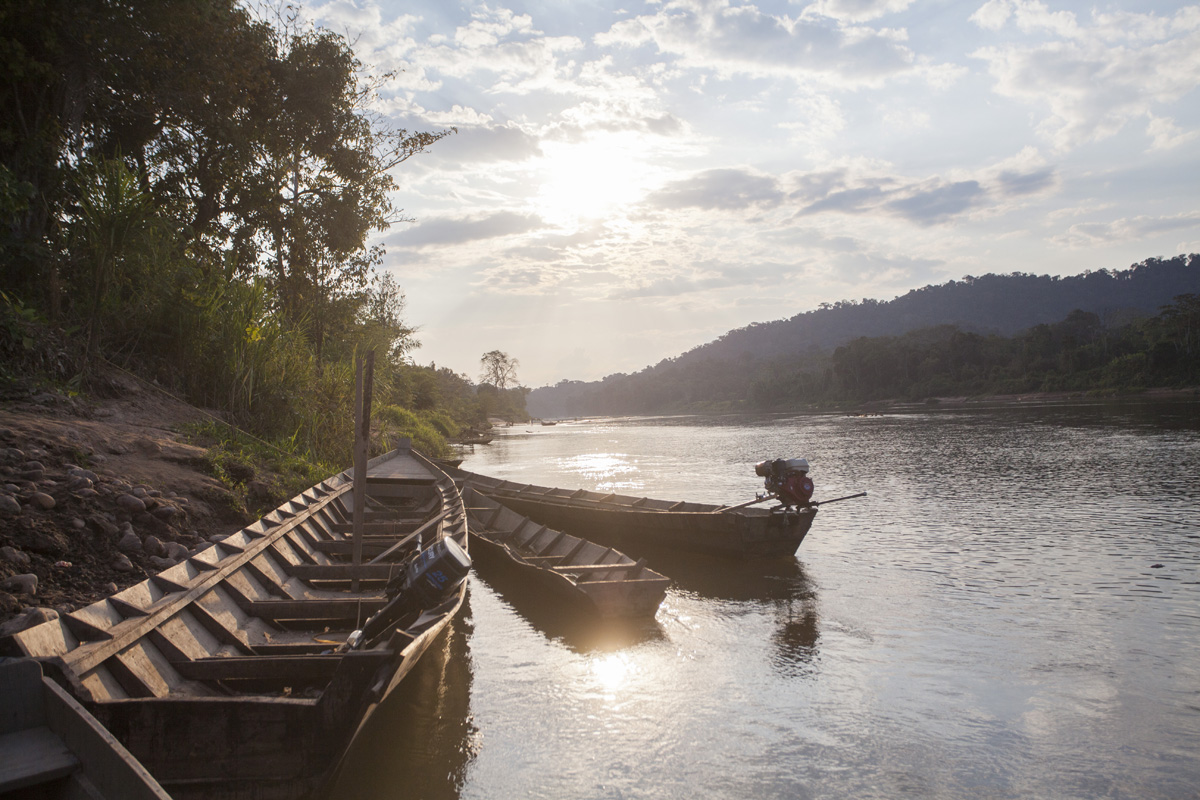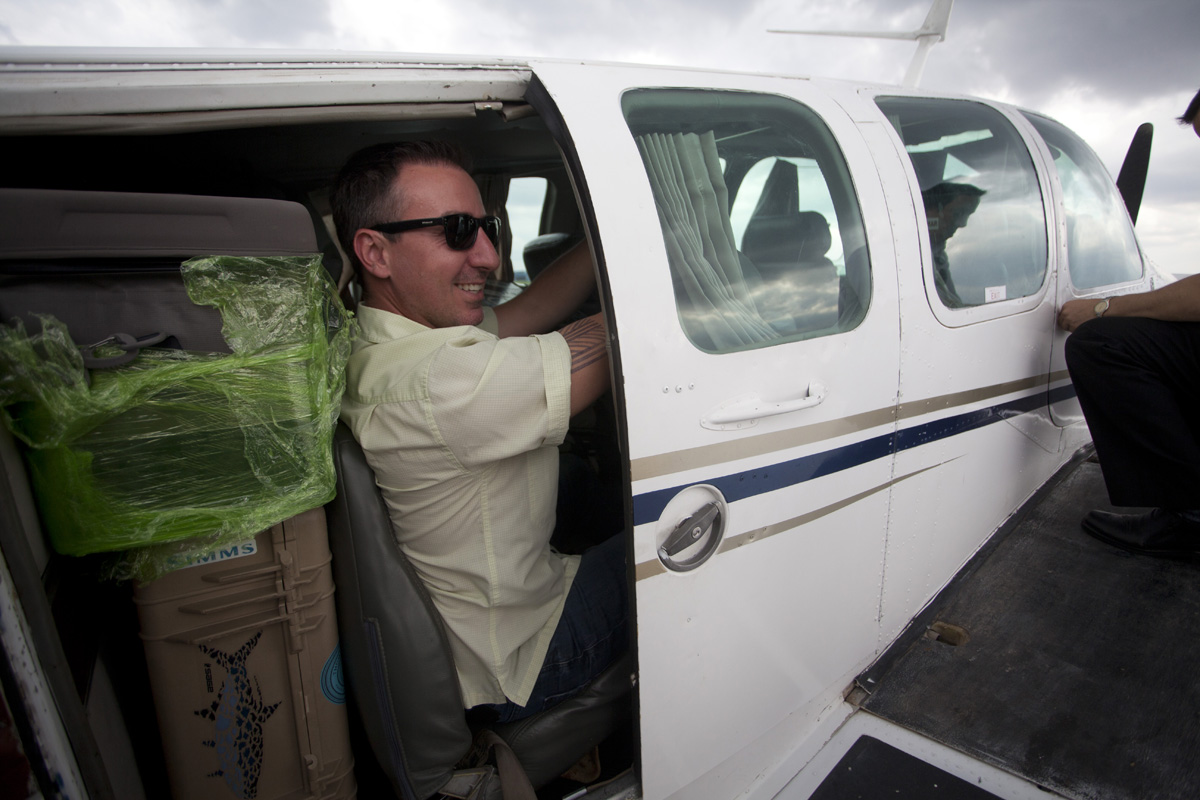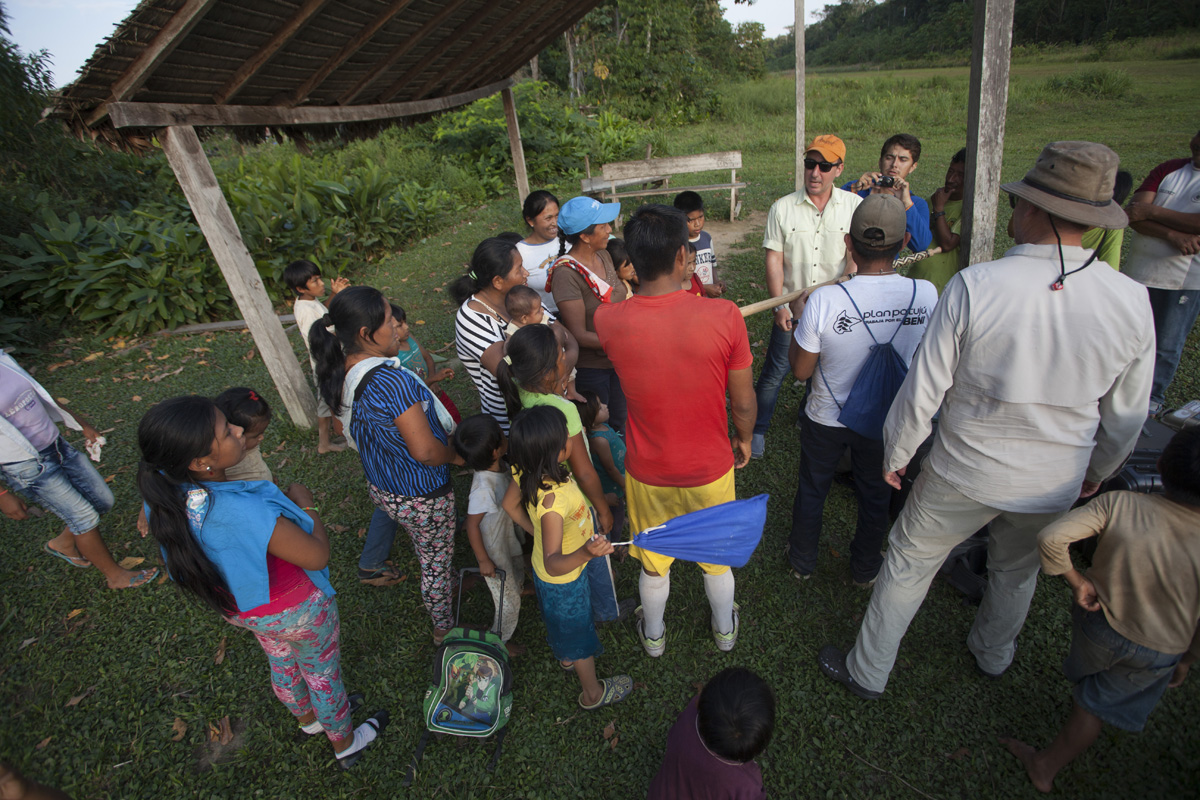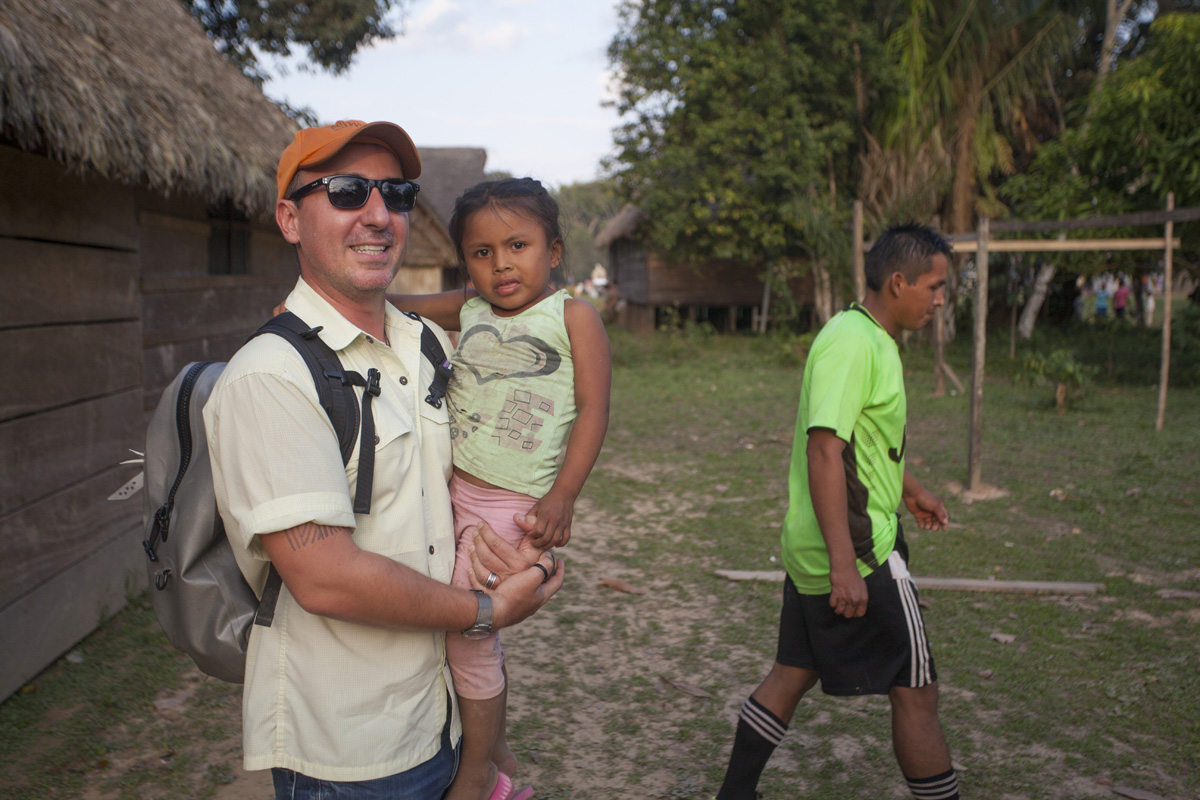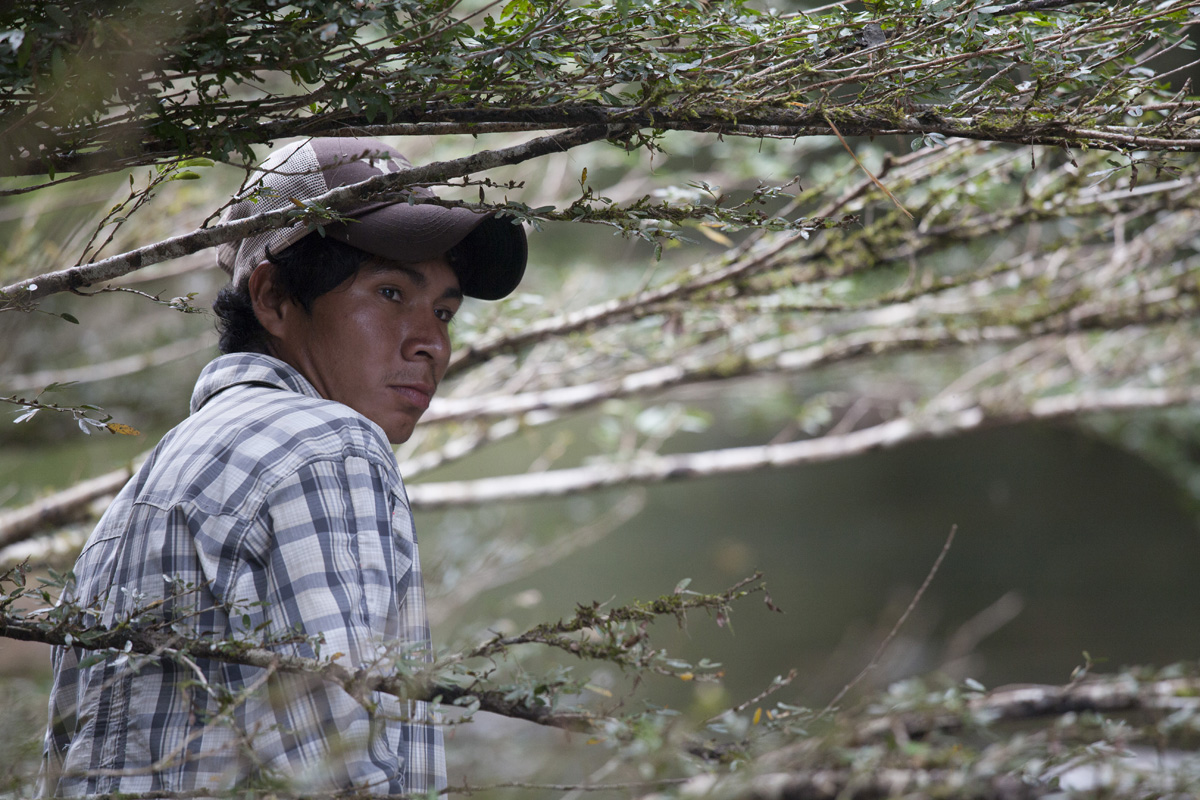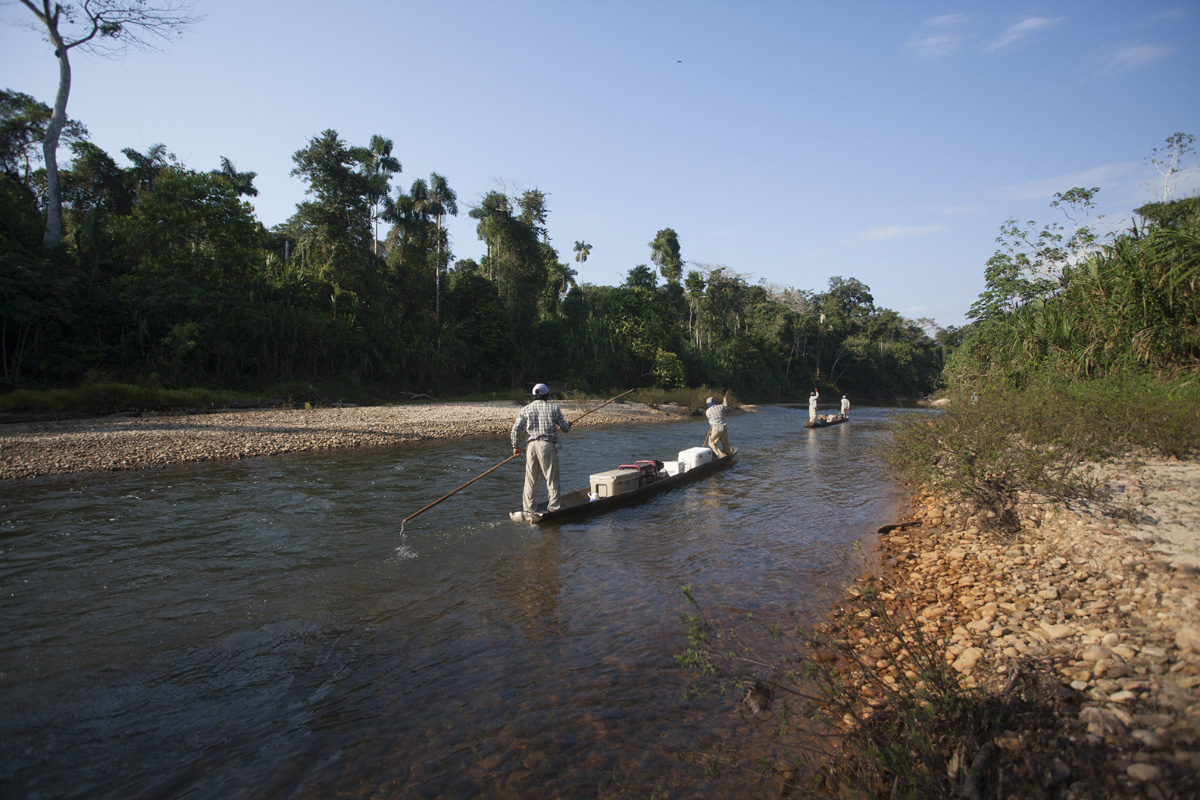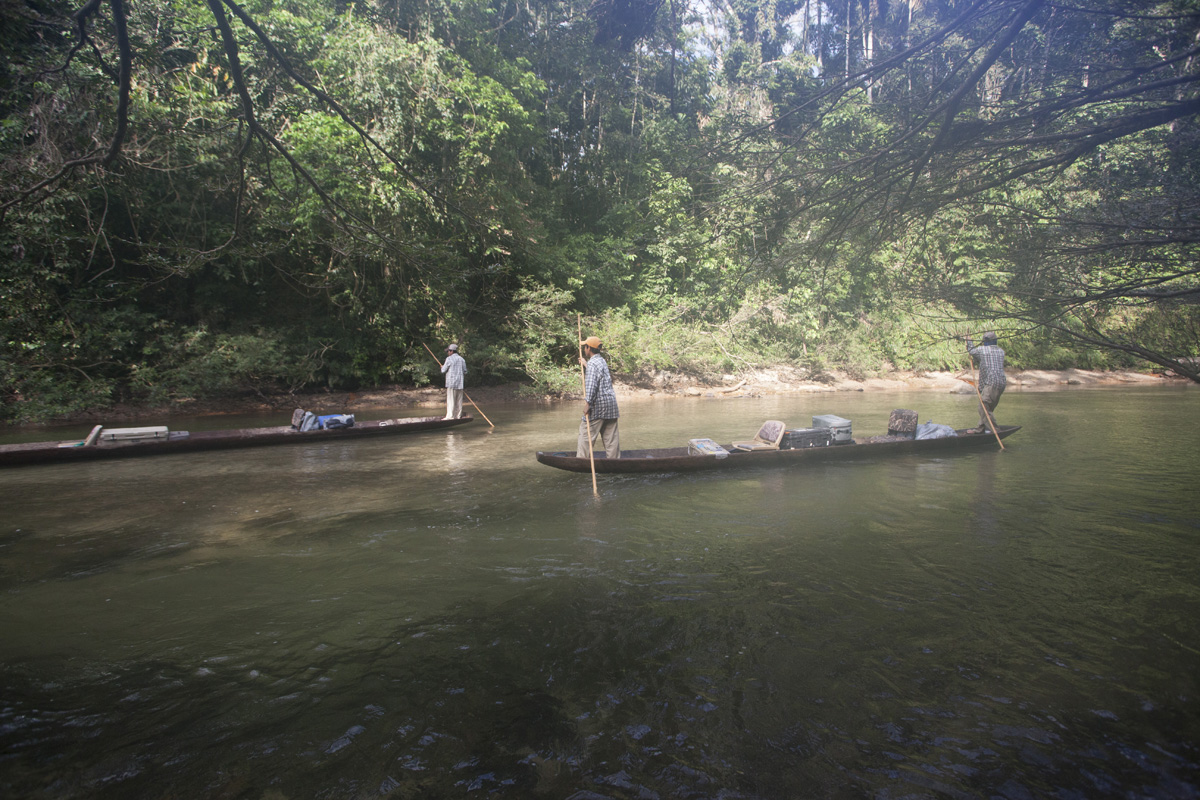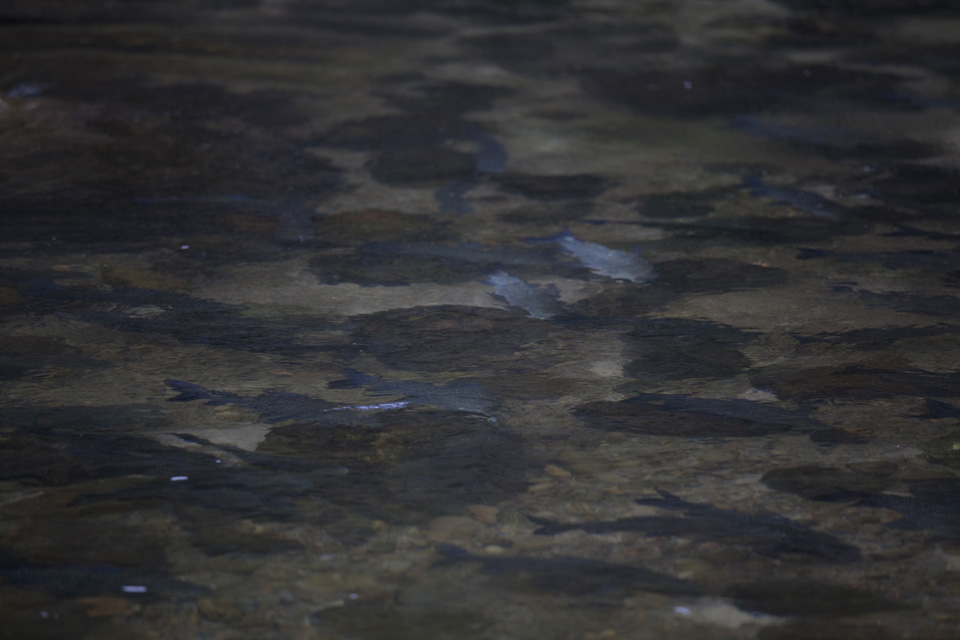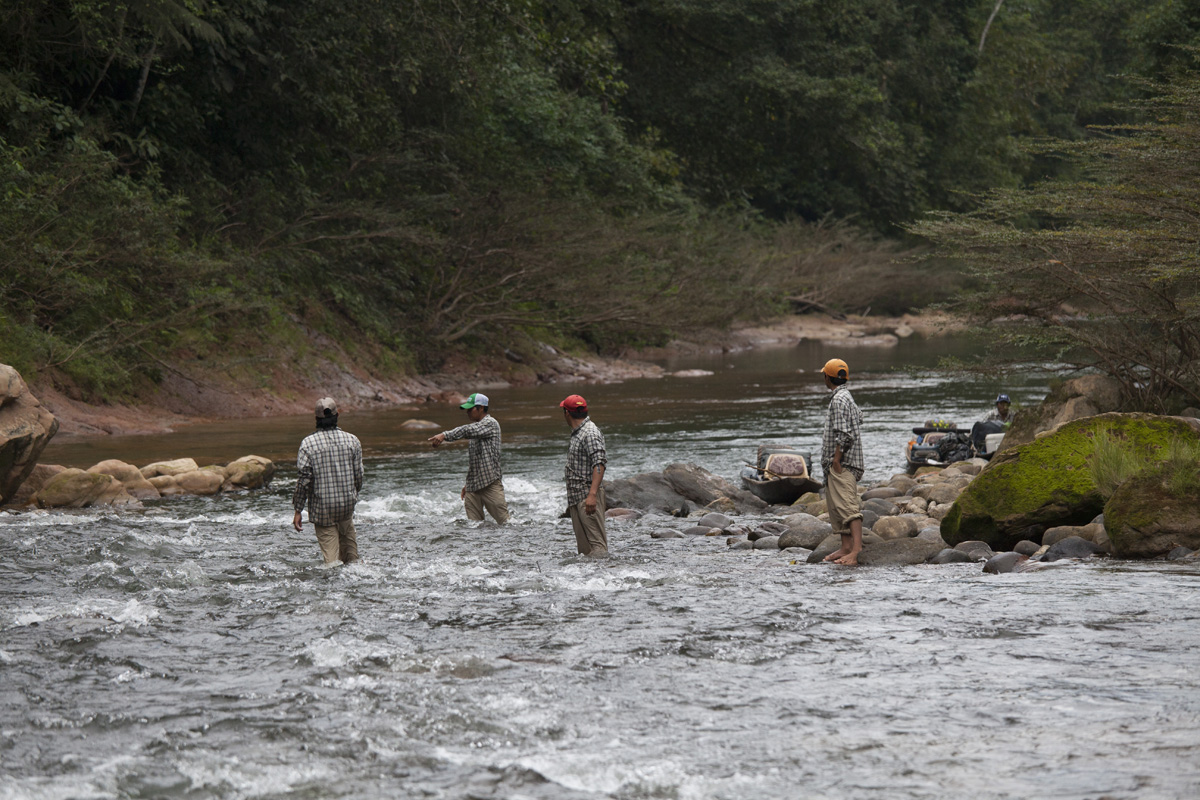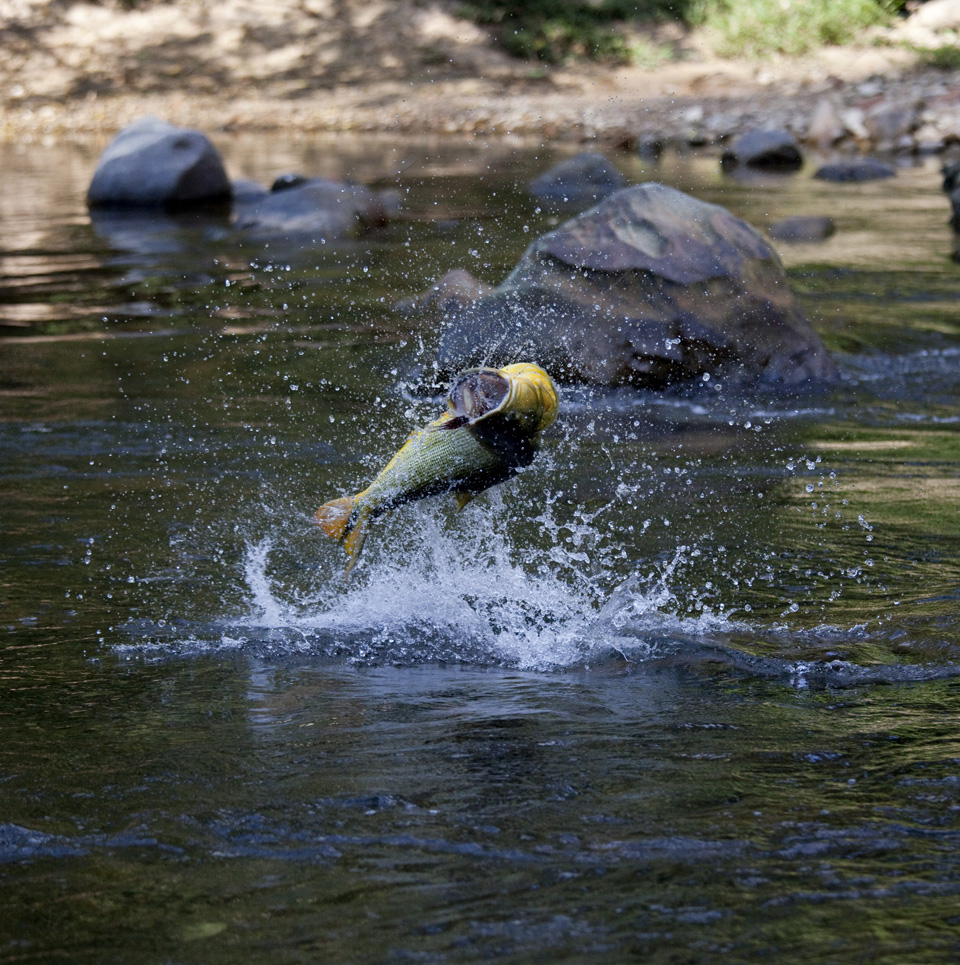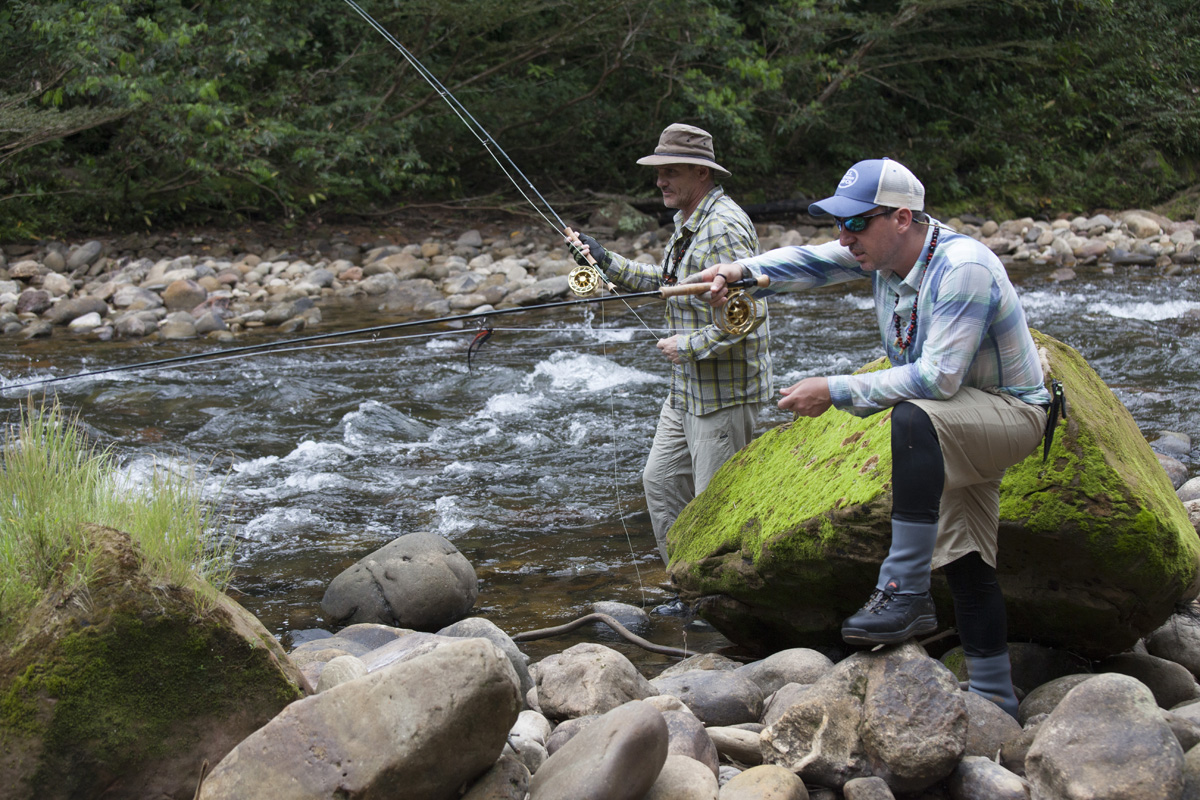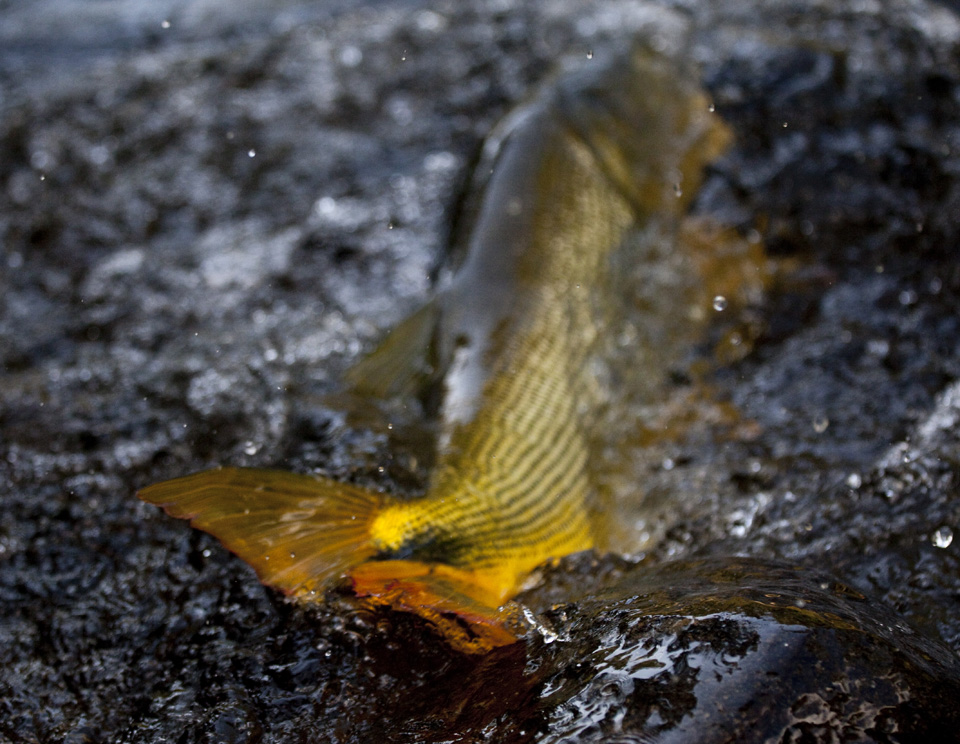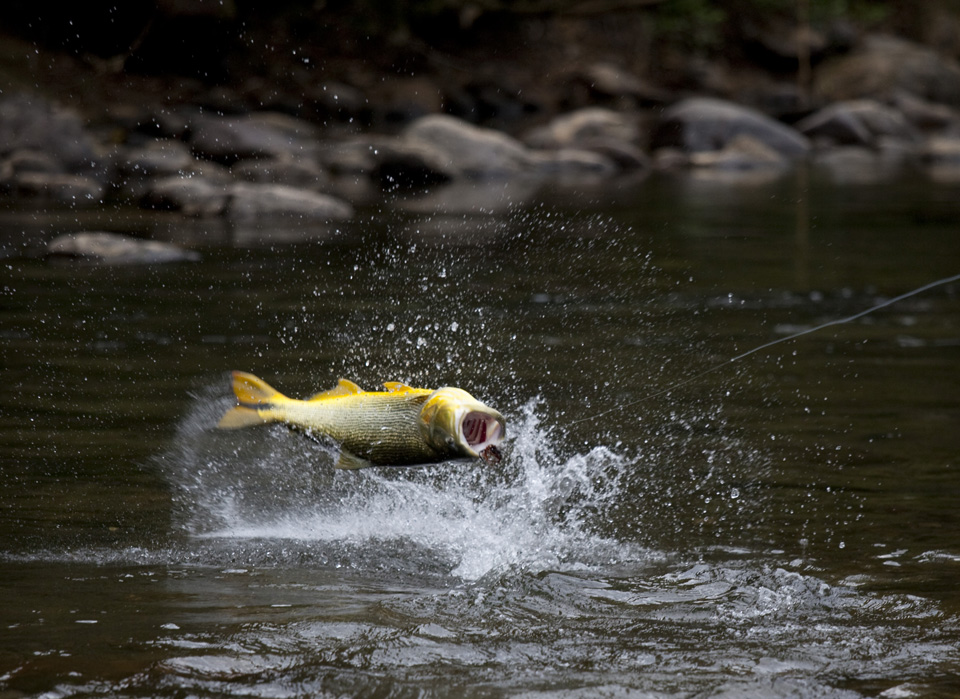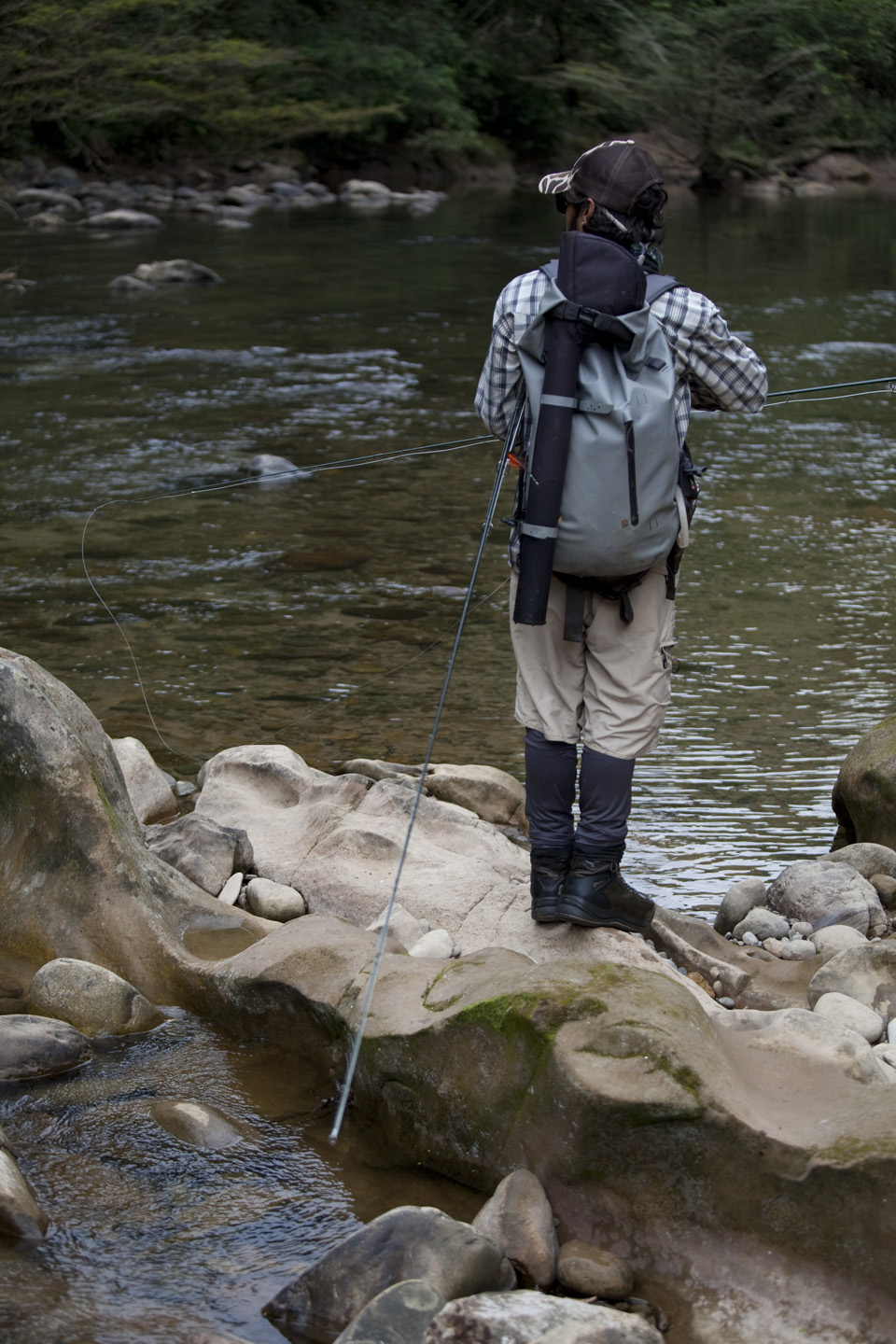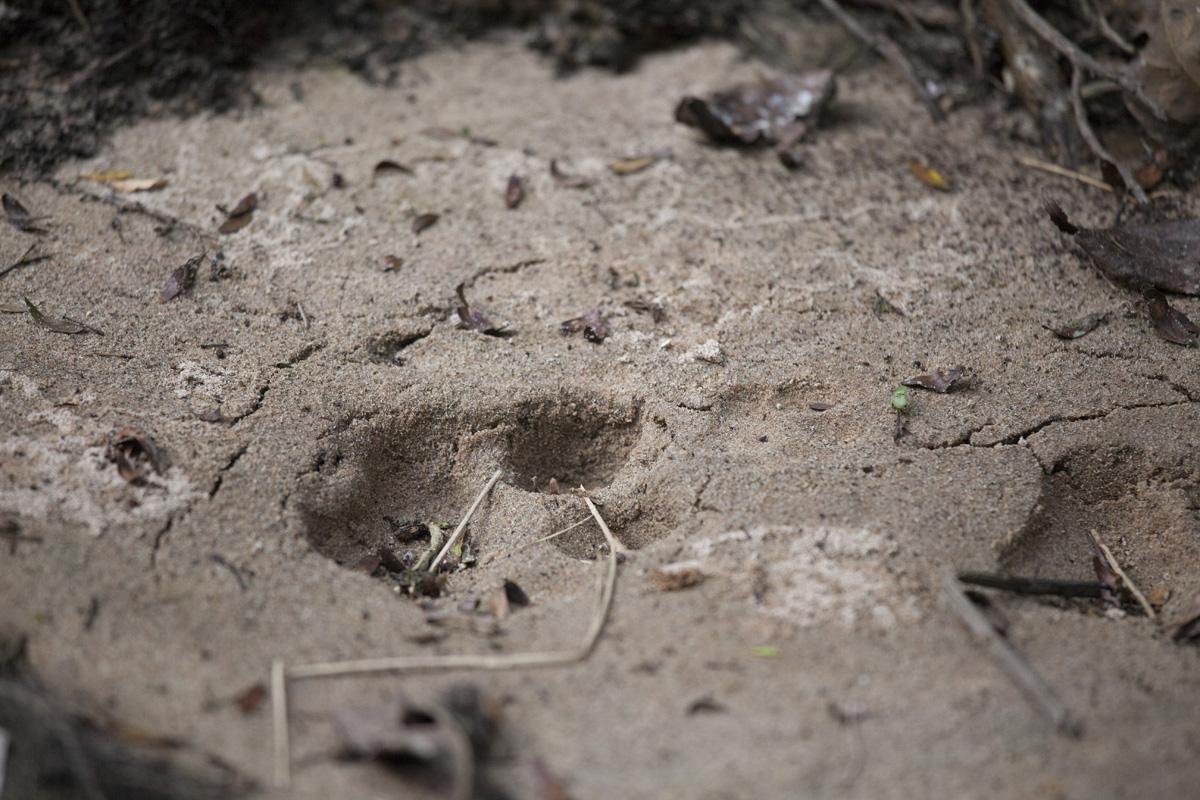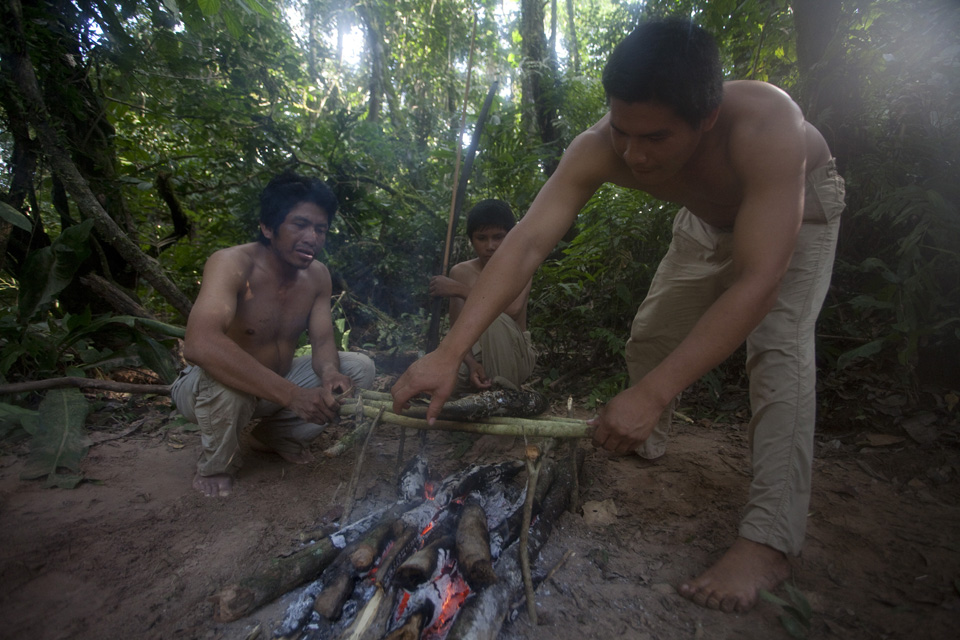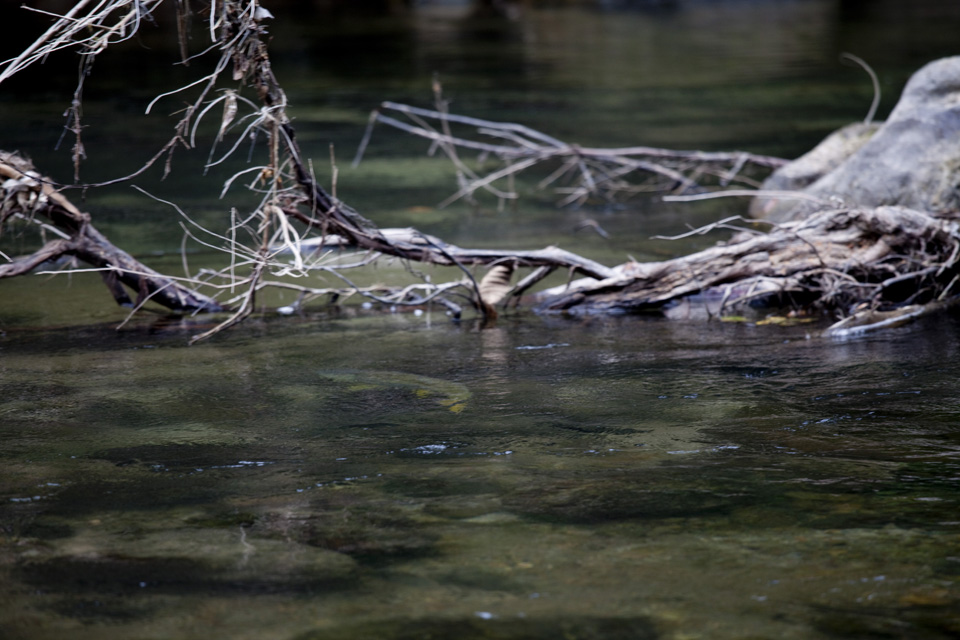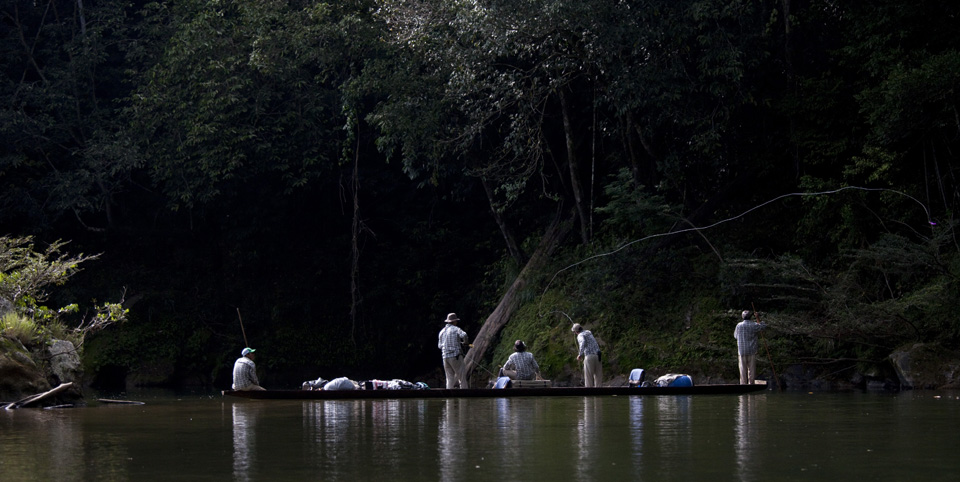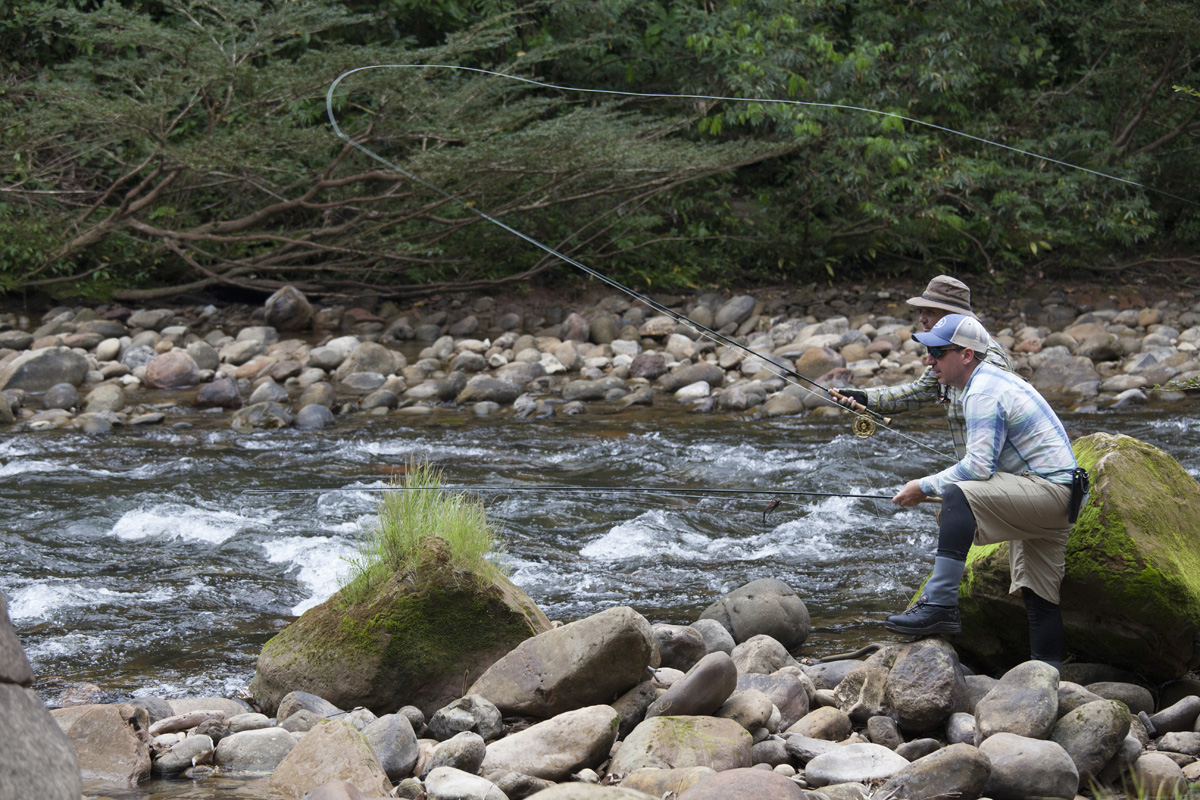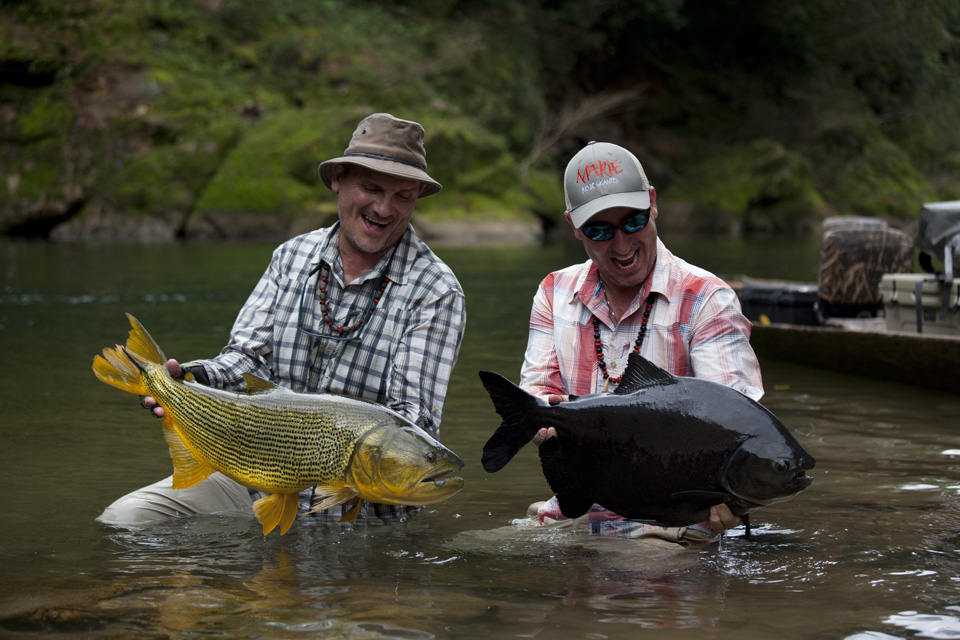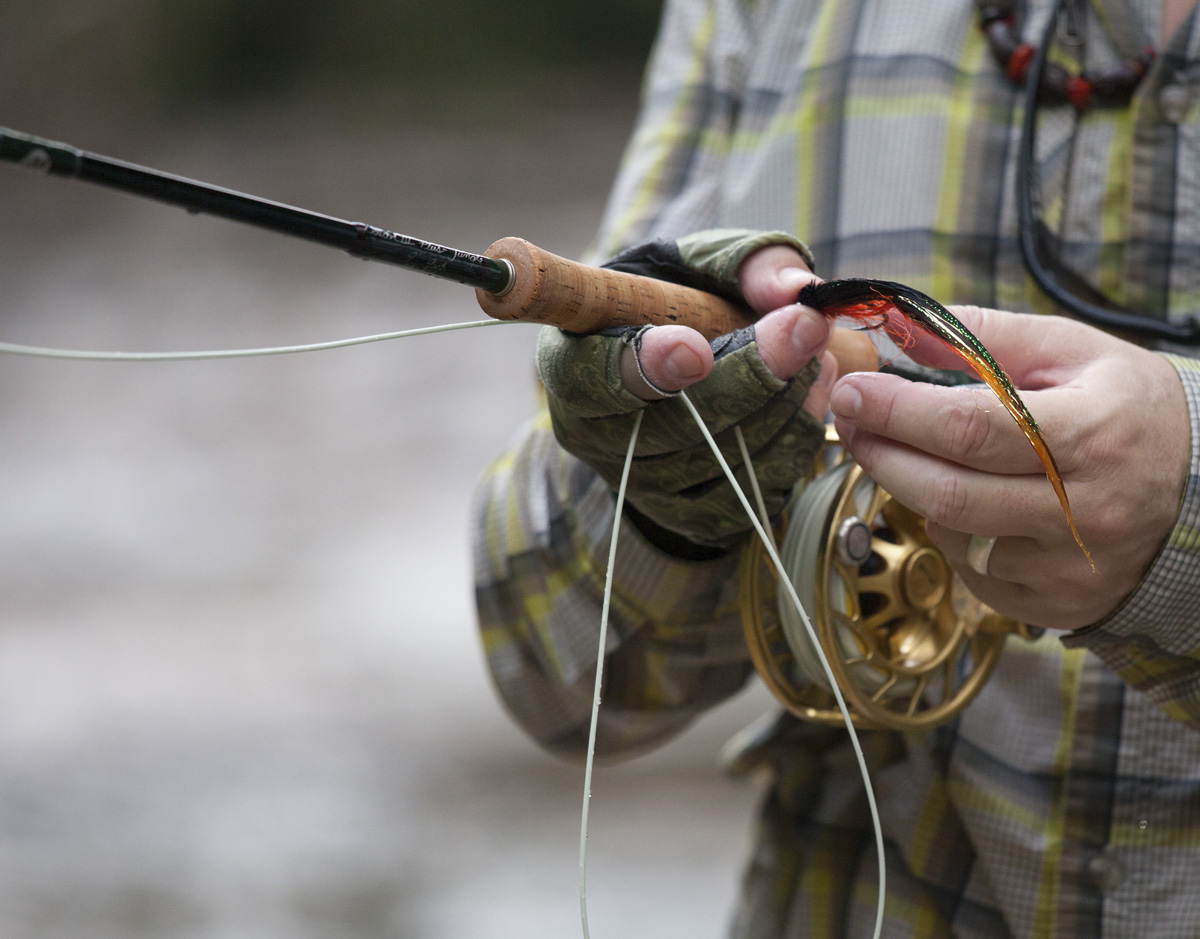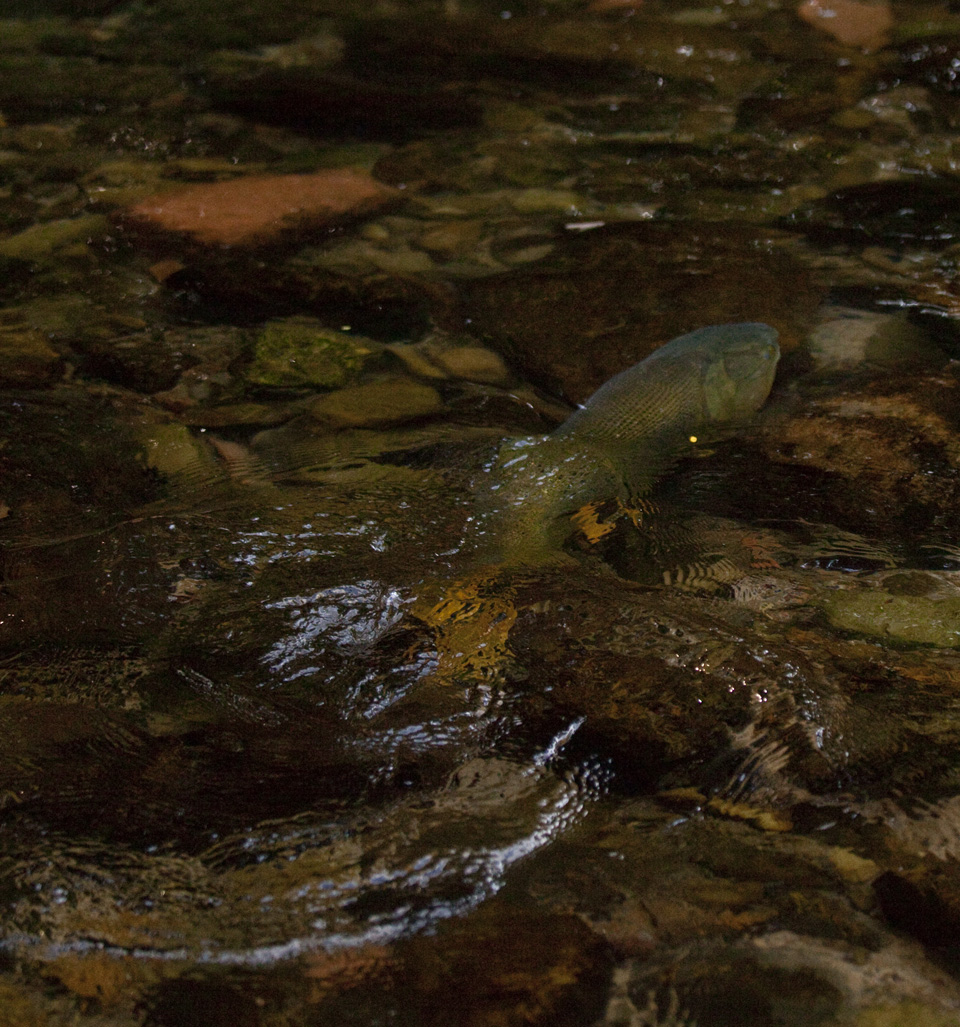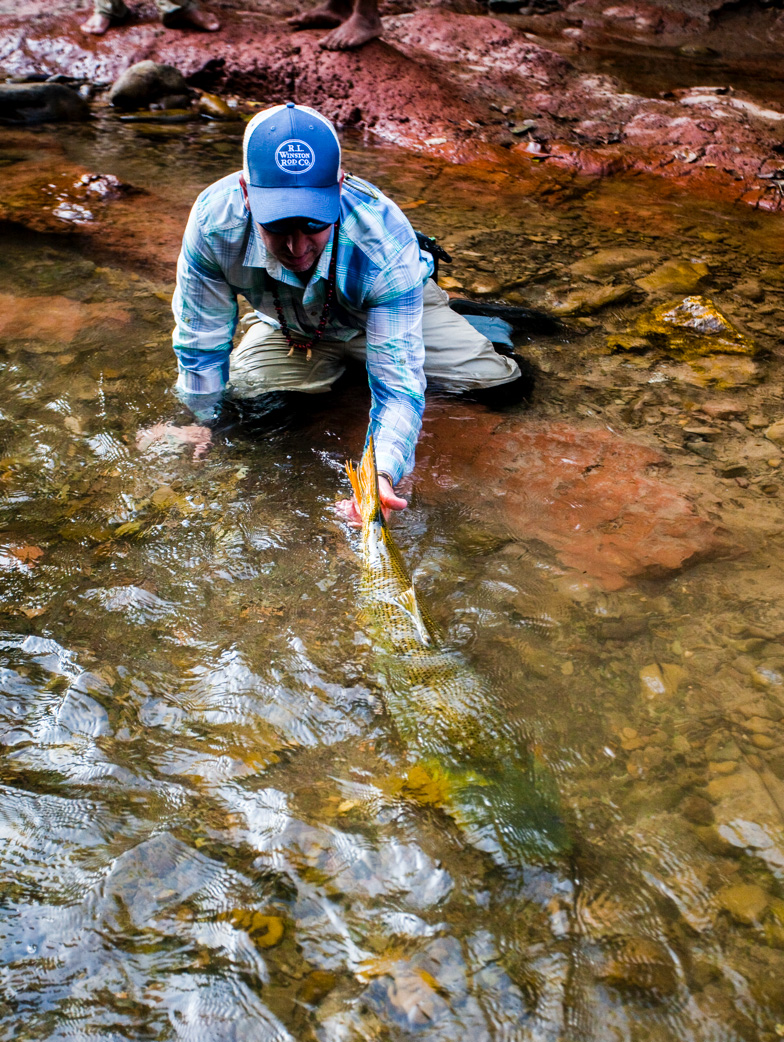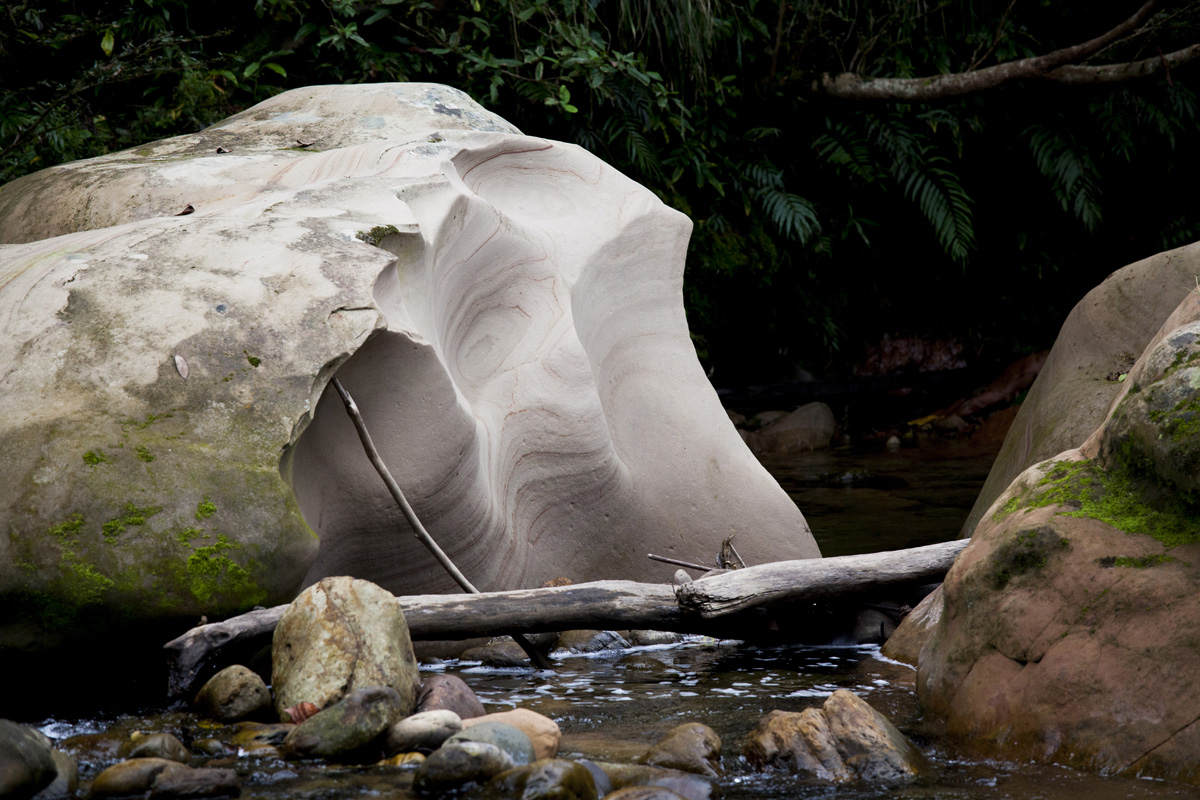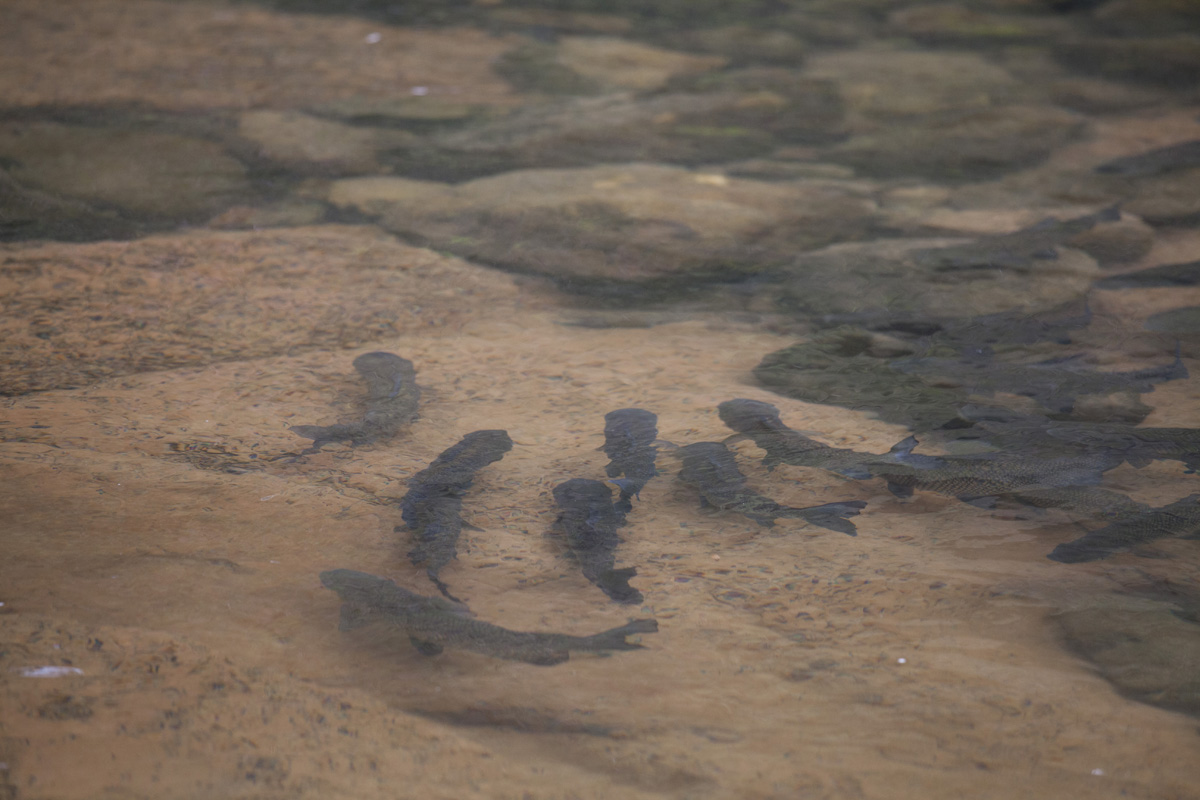By Rodrigo Salles
Diary on the making of Jungle Angler.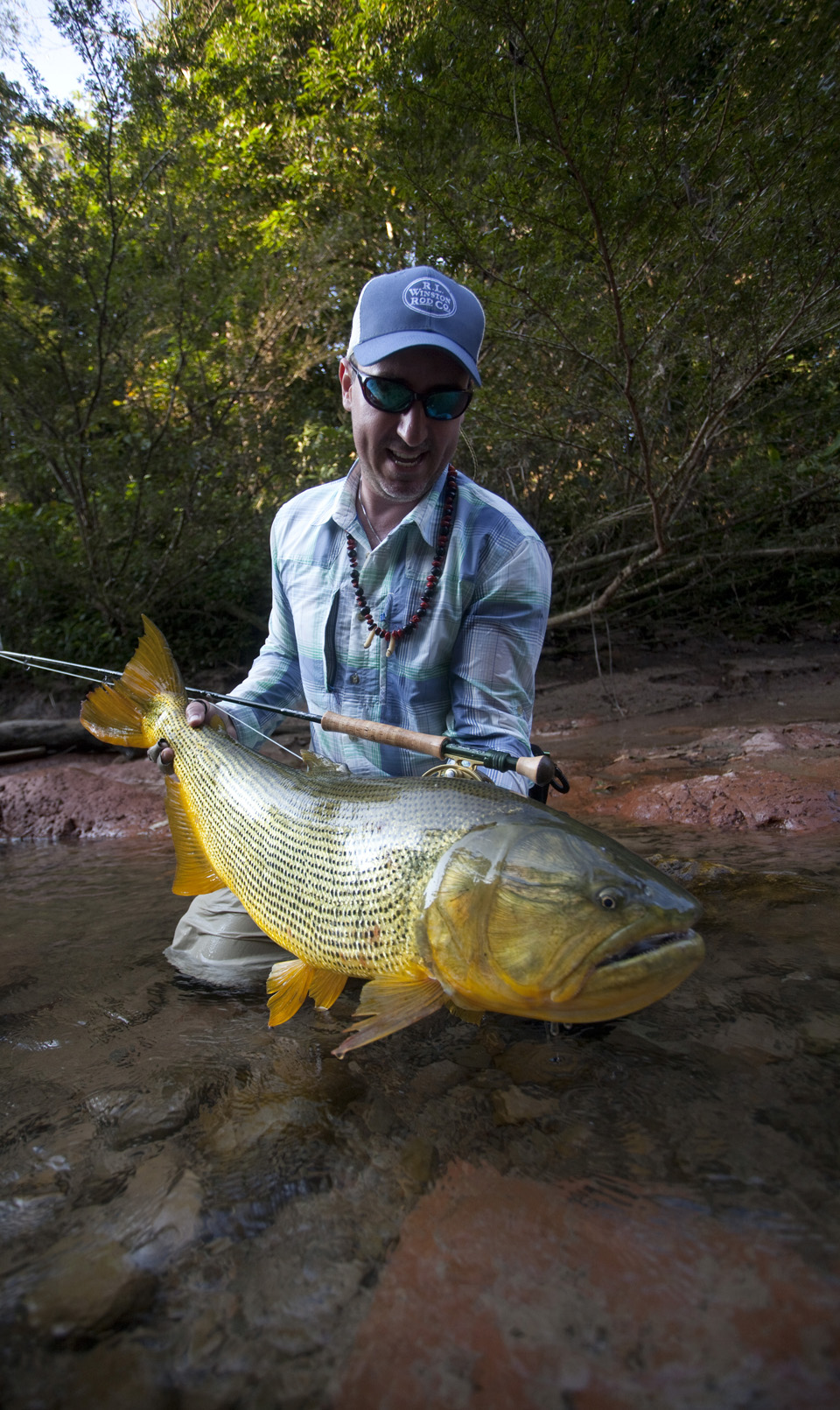
Aug 4th
Starting the Journey
I left my home and office in Manaus, Brazilian Amazon, in a hurry, leaving the building of our new vessel for Marié River (www.marieriver.com) in the hands of my father, a retired engineer who had taken the task to help us to build the most modern and advanced ship in the Amazon in less than 5 months. I was on my way to meet our crew in Santa Cruz, Bolivia, for a new exciting adventure – filming the headwaters of the Agua Negra River (Black Water) in the far upper reaches of the mountain zone of Tsimane Indian Territory, a place where only two of our guides had reached once before, and came back with no words to describe what they experienced.
The headwaters of the Agua Negra looked like the perfect place to explore new waters where fish had never seen a fly and the animals shared the jungle only with the Tsimane Indians.
After one year of planning and preparation with Marcelo Perez, my business partner and Untamed Angling CEO, and our friend, renowned filmmaker RA Beattie of Beattie Outdoors Productions, we all felt it was time to jump deep inside the jungle.
When I arrived in Santa Cruz, I had a better understanding of the journey we were embarking upon. Jako Lucas, of Cpt. Jack Films, was already with RA in Santa Cruz ready for action. A great angler, guide and film maker. We had the very best pro film companies in the fly-fishing industry to accompany us. Period.
We jumped in the small Cessna 206 planes loaded with fishing, camping and film gear, and after a welcome nap, interrupted only by some boxes falling on my head, we landed in Tsimane territory at the Oromomo Indian Village.
To our delight, the Tsimane Indians greeted us with their traditional dance. You could see in their faces how very happy they were to see us there.
For me it was especially wonderful to see our Indian friends and partners in the Tsimane Lodges project for the first time in a year. Since starting the development of new Brazilian destinations I hadn’t had time to come back to Tsimane as I normally did. I could see the village had improved in terms of cleanliness and structure.
Suddenly as if in a film, I remembered the first time I had visited Oromomo, on the very first exploratory trip to Tsimane Pluma and the Itirizama River back in 2008. I remembered when we first met the Tsimanes and Yuracares – the ethnic groups who live in Oromomo village. They had serious health problems with their babies and young children and also difficulty keeping their local school running. But despite what would be a very difficult life in our occidental culture, they were happy in all aspects. We spent 4 days at the community sleeping in the professor’s hut talking with almost everybody, and what I really saw was a happy community, proud of their land and culture and most importantly – living in harmony with the jungle. They didn’t have problems finding food, since they only take from the jungle what they really need to survive. They have the jungle animals and lots of fish – their main food source is the sabalo,the local bait fish. They know which animals and fish they should kill and when. So their natural supermarket always has a good stock of food. They know they need pure water and they take care of it.
Also what makes the culture of the Jungle Indian tribes different from our western culture is the concept of community and sharing. When a group goes on a hunting trip, it means food for all, not just for the families of hunters. They really know how to live and keep the integrity of their communitarian society. Even when there is an unsuccessful hunting trip, the little meat they have, they share among all. When the hunters are successful, everyone shares in the bounty. When the hunt is unsuccessful, everyone shares the lack of meat. Their concept of family is not the same as we have been taught. Their family is their entire community.
Aug 5th
Heading Upstream
6 a.m. Woke up together with the “tojos” birds screaming in their daily ritual. Last night we had a long conversation with R.A., Marcelo, Jako and Gabriel, our Tsimane pro guide about our expedition plans, maps, camp sites, fishing conditions, film planning script, music and obviously the fly fishing gear.
I don’t remember when but between one spectacular ice cold Pacena beer and another, R.A. grabbed some of the rod tubes, and the traditional cream colored rod sock caught my attention. Yeah, baby, some brand new Winston rods! And those were very special – the final protos for the new Boron III X Jungle Rod Series. For the last year and a half Marcelo and I had tested prototypes, given our feedback, talked with the Winston Rod designers and finally the ever so anticipated Jungle Rods were ready and shinning in our hands. What could be better than to give them their first ride in the best jungle playground of the fly fishing world – the Bolivian Tsimane jungle rivers. And what’s better than to do it in an expedition to the headwaters of a hidden jewel tributary of the Sécure River, the Agua Negra.
For those who have experienced fishing in an Agua Negra jungle stream, you know what I’m talking about. It’s the perfect jungle fly fishing river. Crystal clear water, classic as a trout freestone with runs, flats, rapids and pools, all filled with big sized “latin blood” freshwater dorado, in their most wild and perfect environment.
As soon the sun started to warm our bodies, we were already inside the wood dugout Tsimane canoes after a 20 minute walk on the jungle track that started behind the Agua Negra Camp at the edge of the Sécure.
The weather was great and the water was crystal clear. Before moving upstream, we got those cream colored Winston rod socks and started to set up our gear. Marcelo chose a Boron III X Jungle 9wt and I went with a Jungle 8wt. Tropical core floating lines. This time we went with the texturized SA Mastery Saltwater taper. Add 40 pound fluorocarbon plus 10 inches of knotable wire and tied a black/red Andino style 8 inches 3/0 streamer. We were definitely ready for Camera and Action!
Back in my tent after our first day heading upstream, I decide to journal the day’s fishing as well as my first impressions of the new rods.
We fished different waters but basically the first stretch of Agua the Negra in its lower section is more gentle water with fallen trees and sand bars turning from shallow fast water to deep emerald green pools.
We caught some good action – the river is packed with sabalos, the main source of food for dorado, and chasing them were some hungry dorados, their bodies almost out of the water in pursuit of fresh food.
All we had to do was approach the spot quietly with the rod in one hand and fly in the other, ready to cast. It was a matter of waiting for the first wave of nervous sabalo to run away from a big dorado army swimming fast on the attack. That’s the moment to place your fly right in the feeding frenzy. In these moments you need a fly rod capable of both loading very quickly with minimum of false casts, and placing a big fly right in front of these jungle predators.
Once the dorado hits your fly, be ready for an adrenalin shock. The rod must be strong with a powerful butt section to control and battle dorado, otherwise you can end up with just a broken rod in your hand.
I believe Boron III X rods are an evolution in Winston rods. They load very quickly, even with big streamers. With a stronger butt section they are ready to battle strong fish in this feeding frenzy fishing condition. Dorado are an amazing cunning fish…
Aug 6th
Top Water Action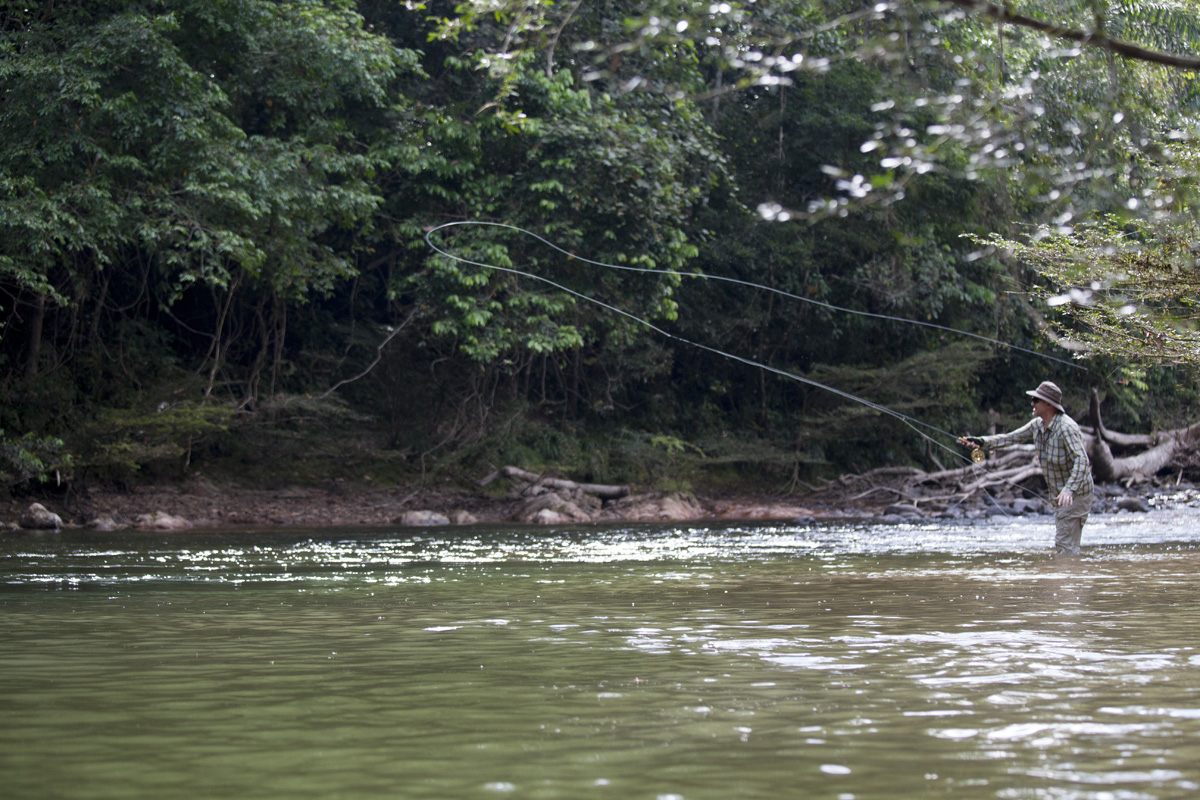
The second day of the expedition started with lots of action and dorado in running water perfect for fly fishing. The air and water temperature were perfect and the river was so clear, it was easy to spot fish. Anglers always dream of sight casting but dorado are not easily fooled. You must have an accurate cast in very exacting conditions. The upper section of the Agua Negra is a typical freestone mountain small stream, so the casting range is between 30-60 feet. The first cast is the most important in such clear water conditions. Planning how to approach without disturbing fish and how to place yourself to cast is crucial.
The jungle is at your back and the fish are in front of you. You are positioned inside the water and casting upstream and must have total control of your line. As your fly hits the water you must move it – not the easiest thing when you’re using a big streamer and have just one chance to get the perfect sight-casting hookup!
We started to get some crazy action with topwater flies, big mouse patterns, sliders and poppers. RA and Jako caught some wonderful footage.
After a long day we joined Tsimane guides as they impressed us shooting sabalos with bows and arrows. In less than one hour we had the perfect dinner.
Resting on the beach enjoying the evening sky I contemplated that adventure deep inside the Amazon jungle is not for everyone. You really feel you are nothing more than a small creature in the middle of a remote place. Here you understand the difference between yourself and the Indians. The Indians have a deep sense of place – they belong here, this is their home. They have an innate knowledge of the jungle and they know how to read all of nature’s signals to protect themselves and provide for themselves.
As humans we have something animals lack, the intelligence and comprehension of what surrounds us. And Tsimane people know exactly how to use it.
Exploring the headwaters of Amazon Bolivian rivers with the Tsimanes is an amazing and unique experience. It’s more than just fly fishing. It’s an anthropological experience, which makes you reflect about our society, our culture and what we really are on this planet.
The Tsimanes weren’t educated in the best schools or have access to the internet or most of our opportunities. But in regards to how to live in harmony with their world, the jungle, they know much more than we do. They don’t take more from nature more than what is necessary. They don’t destroy just to build something bigger than their basic necessities to live. Something we lost many centuries ago…
Aug 7th
Pacu – The Black Freshwater Permit
Putting on wet clothes early in the morning is not a pleasant thing even in tropical weather. Cool fresh air came down from the foothills of the Andes mountains very early, before the sun had a chance to warm us up. A good way to wake up for fishing.
We were ready for Pacu, the jungle permit. We had reached an incredible sector of Agua Negra where some hills cross the river creating a sloppier rugged shore, with deeper emerald green clear water pools and slower current than yesterday. Today’s plan was to spot some round-bodied black fish in good light conditions and with luck get some good footage of a big pacu taking the fly.
What we didn’t imagine was how this scenario could be captured by a drone camera. Yes, we had an epic moment.
As we moved upstream with Marcelo, Jako and RA prepared the drone and started to follow us with the noisy equipment. I personally couldn’t imagine that any fish would come to the surface to eat something with the sound of a giant bee buzzing around. But that day the pacu were really hungry. In retrospect what we got was the most amazing pacu take ever filmed. You must watch Jungle Angler to understand what I’m talking about. The day was filled with pacu action. These fish are just like permit and not easy to fool. Sometimes they refuse your fly no matter how good your cast is or how perfect your fly selection.
But when they are in the hunger mode, watch out because you will have a freight train on the end of your line. Expect one of the most intense battles of all jungle fish species you can catch on the fly.
Lots of backing off, and it’s not rare that the battle end with no fish for the photos. They are super fast and use every strategy to escape. They use their round bodies to take advantage of the current, making long runs mixed with down and dirty games on rock and fallen trees areas.
You must have a rod with a strong butt to fight pacu. The way you angle the rod during the fight with lots of line out of your reel, can make the difference and stop the wild instinct of these round fish. Stiffer rods with a stronger butt section make the difference. Boron III Plus Jungle Rods excelled in our expedition for pacu. Period.
Aug 8th
T Rex – Day of Glory
Special Note: Very few of my jungle fly fishing adventures in the jungle would be as special as today. To celebrate, I cooked a special fish for RA and Jako. Marcelo gathered the wood for the fire and kept it burning hot. Today’s barbecue was to celebrate the success of our expedition. We had spent 4 days heading upstream and exploring virgin waters. Today we reached an amazing stretch of river and for me we experienced fishing in the perfect jungle stream. The geography and landscape were really unique, and the water flows had good speed, only diverted by good sized rocks and small boulders, creating lots of pocket water and back eddies 2 to 3 feet deep, just the right depth to hold big dorado and keep sight casting possible.
The water was incredibly clear and something in the air made us confident we would have a great day. The Tsimane guides were especially happy that day, talking a lot one with other making jokes and laughing at 6 am. We left our campsite excited, with the feeling we were the luckiest anglers in the jungle. We had reasons to be – we were in the right place at the right time.
I got my BIIIx 8wt Jungle Rod and patiently selected the best flies I still had in my pack. We didn’t have many good streamers left and Marcelo and I were trying to figure out how many we could use today and how many we should hold on to for the days to come.
That particular day we decided to use the best of what was left and it really paid off. In one morning we caught the largest average size dorado we ever had in our entire lives. Jako’s face at the end of this great film shoot was indescribable, priceless.
Dorado can be the most aggressive fish in the jungle sometimes and in the blink of an eye can turn into the most technical and hard to catch fish on the planet. Fly fishing for dorado can be a mind game, that makes you crazy. In the same day you can experience both heaven and hell. One moment you can make the worst cast of the day with the line falling over the fly and the fish still striking and in the next bend of the river you can cast the perfect loop and place the fly beautifully in front of the fish.
When fish become very aggressive we call it T-rex mode. Nothing escapes when they are hunting, and in that mode they simply seek and destroy their prey. When fish are not biting, I like to call it the old brown trout mode. It’s when they are selective, wary, and show they are experienced top of the chain predators that can select what they want to eat, or even refuse to eat.
Since our first day exploring the Agua Negra we had many different fishing situations, and the dorado had shown both their T-rex and the Old Brown Trout faces. This day in particular was the day of the big T Rex face.
All the sabalo in the river were very nervous, and even small dorado were avoiding swimming in main current. As the sun rose and we moved further upstream, we started to see the reason for the terror in the water. The monsters had left their home and went out to enjoy the day hunting. When I mention monsters I’m talking about 25-35 pound range. A 20+ pounder dorado is the apex predator of the jungle rivers. They use all their stamina in acrobatic jumps and fast runs. When you hook them, it is like an IV Adrelanin injection.
In the morning we missed some real trophy fish – some jumped and said bye bye to our flies, and others cut our leaders when crossing their submerged rocky avenue playground.
By late afternoon, tired of hiking upstream, we reached a red rock area. Indian guides were leading the expeditions, and no more dugout canoes could move upstream from that point. Chastur one of the most experienced Indian guides said to me: “Right on the end of this straight run, you will reach a small pool and another shallow run. Big fish patrol the shallow run as they get in and out of the pool, and that’s when they are riding herd on the smaller fish in shallow water.
I moved immediately upstream focused on finding a big dorado. I spotted some small fish in shallow water but avoided casting, so as not to move the water and call the attention of the big ones. Sometimes when you hook a small dorado, a “vaca” (cow) like Argentinean guides call the big dorado, hit and eat your hooked fish and it’s a very intense moment. It’s not rare they cut the small dorado like nothing. I didn’t want that game right now. The game was to find the T-rex and put the fly right in his field of vision and make him eat.
I made few more yards stalking carefully upstream. And well…there He was. Right in the middle of the stream, headed upstream against the current laying over a red rock. Like a king. The king of the river. It was a real big dorado, that we rarely see in such clear and shallow water. Nothing worried him. Just a foot to his right and slightly upstream there was a smaller dorado. And on his left side a few inches downstream, another smaller dorado which in fact was a good sized one, but looked a small fish in comparison with the king. I figured out I had just one chance to put the fly in front of his nose. The other two fish, as all smaller fish do, would be faster to hit the fly, and I felt obligated to make the perfect cast, and pray for the big fish to be faster. I also had to be careful to not put the fly too close, otherwise the movement of the fly line would spook all the fish. I placed myself 50 to 55 feet behind the fish. Behind me were some bushes and trees, not a great space for a good 45 degree angle upstream cast that could reach the fish. I decided to place myself almost downstream and narrow the angle across from the fish. I tried made the perfect cast but no luck. When the fly was in the air a jet wind changed the direction and I needed to correct the path of the fly in mid-air. The fly hit the water 10 inches above the king, and the dorado didn’t hesitate for a second to move his head out of the water and take the fly as soon as I stripped it. The small fish didn’t have a chance. He was on. A couple of strong strip set hooks and the king was jumping and running fast downstream directly towards RA’s position on the river. That’s the moment when you must move your legs and follow the fish. The majority of big fish we’ve lost in these kinds of small jungle streams is at times like this when they move downstream and we let so many meters of line off the reel.
The fish stopped and used the current to his favor to recover right in front of RA. Perhaps if we’d had an underwater camera, we would have caught the best big dorado footage ever. The king fought real hard and moved an extra 50 yards downstream before reaching a lunar boulder zone where I decided to stop his intentions and control the battle. When he stopped to move downstream, I ran further downstream from him and got down and dirty, pointing the rod at an angle that made the fish come to me and not use the strong current to his favor. One last jump and game over. He was in my hands.
Aug 9th
Reaching Nirvana
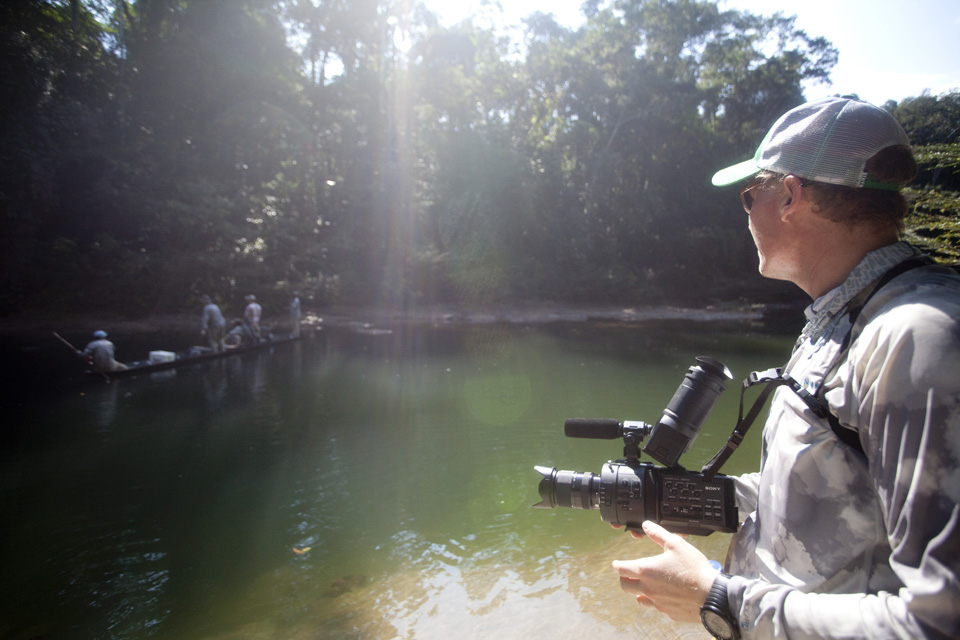
The last day of our exploration we finally reached the headwaters of the Agua Negra river. As we had moved farther upstream, the river had gotten smaller, in a typical pool and run pattern, with bigger rocks, some really amazing boulders and the mountains smashing the river into a tight canyon.
It was Jako’s and RA’s day to experience the jungle king of rivers. We had so much amazing footage on camera and drone, that we decided to relax and get some fishing with no strings attached. They had never fished for dorado before, and what could be a better way to start.
Well, no need to say more than that was an intense fishing day with lots of action, sight casting in pocket water for T-rex sized dorado. The rods worked perfectly in these smaller waters, the 8’9” made the difference in tight corners and for better line control in small water. And even with super sized dorado they really worked well. They are ready for the Jungle Anglers!
Rodrigo M. Salles, 39, lives in Manaus – Brazilian Amazon and is Sales Director and one of the owners of Untamed Angling, a company specializing in fly fishing destinations in the Amazon Jungle with the revolutionary concept of partnering with Indians inside their territories. He is also on the Winston Pro Staff and was instrumental in the development of the Boron III Plus Jungle Rods.
He grew up and lived for many years near the headwaters of the Paraná river in Brazil and has had many experiences while fishing in the jungles of Brazil, particularly in the Pantanal and remote tropical jungles of the Amazon. He has explored various rivers of South America in the search of his favorite fish: the Dorado as well as written magazines articles about fly fishing in the jungle, when this experience was still unknown in his country.

